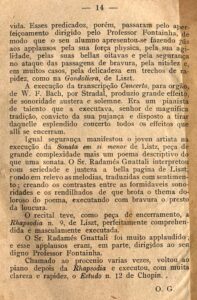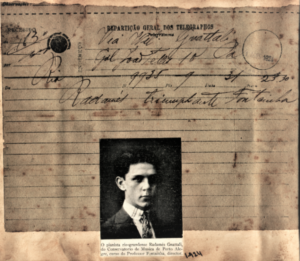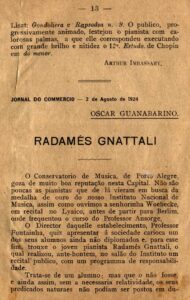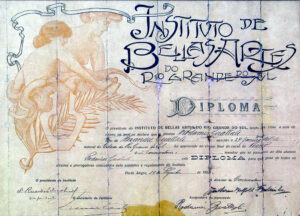- Radamés is taken to Rio de Janeiro by his teacher Guilherme Fontainha to perform a recital at the Instituto Nacional de Música, on July 31 [1]. The concert is a great success and the Rio de Janeiro critics are full of praise. Radamés is considered the great promise of the Brazilian piano [2]. Fontainha, in a telegram to faraway Porto Alegre, sums up Radamés’ overwhelming success in Rio de Janeiro in just two words: “Radamés Triumphante.

Jornal do Commercio (RJ)
- After his success in Rio de Janeiro, Radamés completes the piano course at the Conservatório de Música de Porto Alegre, graduating on December 19. He competes for and wins the Araújo Vianna award, with top marks and the gold medal.
Tender program.
- Born in Rio de Janeiro (RJ), flutist and composer Altamiro Carrilho (Altamiro de Aquino Carrilho), to whom Radamés dedicated, in 1966, Serestas nº 2 for flute and string orchestra and, in 1972, Divertimento for flute in G and string orchestra.
- Another tenentist revolt against the federal government breaks out in São Paulo. The Prestes Column [3] is started, led by Captain Luís Carlos Prestes, which in three years travels about 30 thousand kilometers through the interior of the country.




